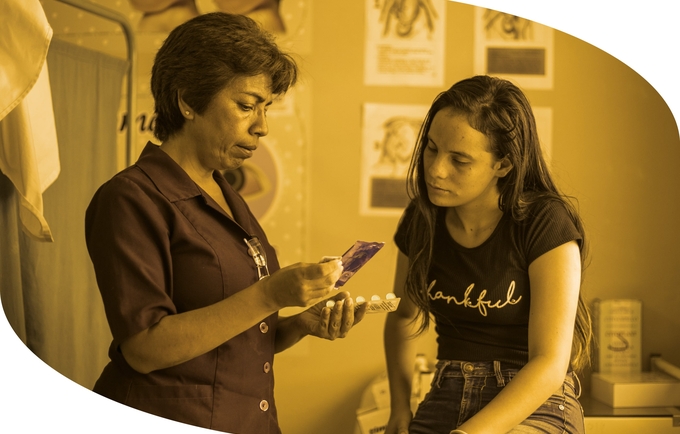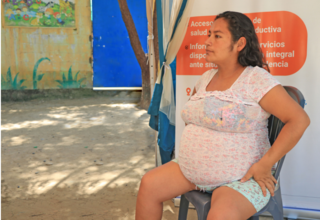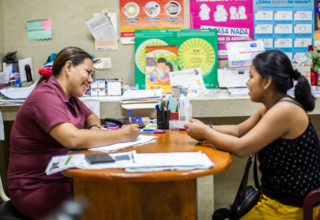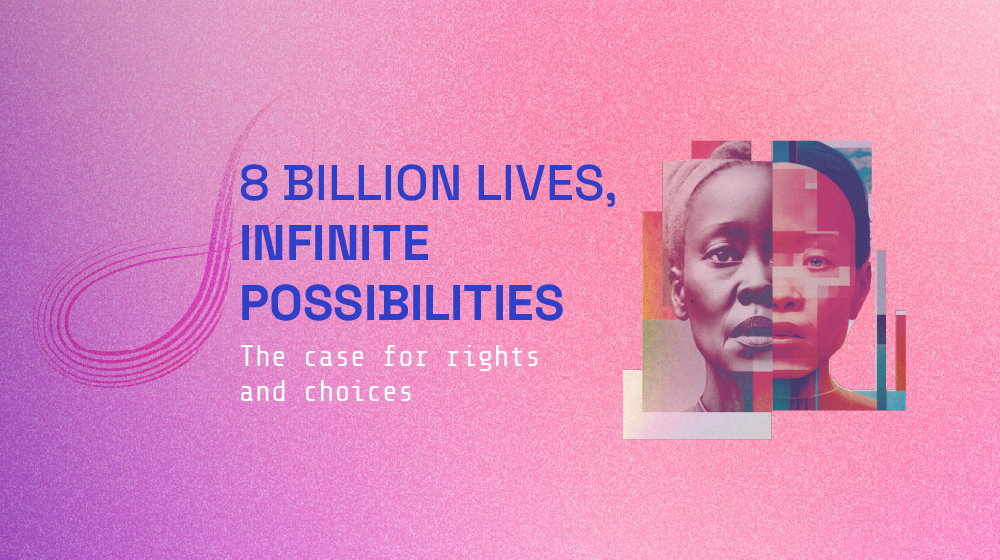Expected outcome 1: Legal, policy and accountability frameworks strengthened to achieve universal coverage and equitable access to high-quality family planning and contraceptive services for women, adolescents, and girls, especially those from the most disadvantaged populations and territories in humanitarian and development settings.
Putting an end to unmet needs for family planning is a necessary condition for girls, adolescents, and women to exercise their right to decide when and how many children to have. Although there are major advances, Peru still faces challenges in the exercise of bodily autonomy, which is key to build well-being, prosperity, and peace in society.
In 2021, 52.6% of births in the previous 5 years were unwanted at the time of conception, and that was 2 out of 3 in the case of adolescents, whose pregnancy rate rose to 8.9%. This situation corresponds with the prevalence of use of modern contraceptive methods, which is 57% in the case of women in their reproductive years and in union. This is one of the lowest proportions of use in similar developing countries in the Latin American and Caribbean region. The breakdown of information by territory, age, ethnic group, income level, education level, disability status, and immigration status reveals huge inequalities to the detriment of the most vulnerable groups.
In this context, UNFPA is committed to supporting the country to ensure universal access to quality family planning and contraceptive services, and to prevent pregnancy in childhood and adolescence in development and humanitarian settings, such as those caused by the COVID-19 pandemic, the human mobility crisis, the food crisis, among others.

1.Strengthen legal, policy, financial, and accountability frameworks in terms of family planning based on evidence, emphasizing pregnancy prevention in adolescents, and build advocacy capacities of the civil society. |
4.Build capacities of sexual and reproductive health providers to provide high-quality family planning and contraception information and services that consider the different needs of adolescents and youngsters, using human rights, gender, and intercultural approaches. |
2.Strengthen the information management system on sexual and reproductive health, including the use of new technologies, to improve access to family planning and contraception and the use of modern contraceptive methods, paying special attention to the most disadvantaged populations. |
5.Improve demand generation interventions, encouraging the use of the most cost-effective contraceptive methods, especially in indigenous and Afro-Peruvian populations, as well as people from rural areas and the Amazon, ensuring the right to make free and informed decisions. |
3.Strengthen logistics management and the information system to guarantee the "last mile", emphasizing long-acting reversible contraceptive methods and emergency oral contraception. |
|

Number of budgeted policies and plans, legal frameworks, and accountability mechanisms on coverage and universal access to health services or other key areas that are part of family planning with a leave no one behind approach, supported by UNFPA.
Baseline: 0 - Goal: 5
5 policies, legal frameworks, or accountability mechanisms on universal coverage and access to health services or other key areas that integrate family planning with a leave no one behind approach, supported by UNFPA.
(a) Percentage of primary care level service delivery points with at least three modern methods of family planning. b) Percentage of secondary and tertiary care level service delivery points with at least seven modern methods of family planning, including LARCs.
Baseline: (a) 50%; (b) 65% - Goal: (a) 80%; (b) 90%
80% of service delivery points at the primary level of care with at least three modern family planning methods. 90% of secondary and tertiary level of care service delivery points with at least seven modern family planning methods available, including LARCs.
Percentage of public healthcare centers that offer sexual and reproductive health services to adolescents (10-19 years old) according to international standards.
Baseline: 20% - Goal: 40%
40% of public health facilities offer sexual and reproductive health services to adolescents (10-19 years old) according to international standards.





